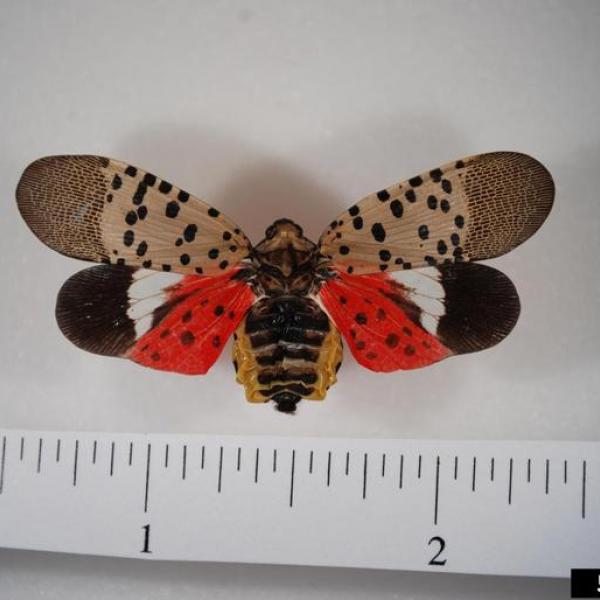
News Source
CANTON — Residents, foresters and landscapers are being asked to be on the lookout for two new species that may invade the north country’s landscape, including a large worm that thrashes around like a snake.
The Asian spotted lanternfly and the giant Asian jumping worm are emerging invasive species that are being monitored by officials from Cornell Cooperative Extension of St. Lawrence County.
North country officials are trying to keep both species out of the region, or at least find ways to contain them if they do spread here.
“We’d like to do a lot of outreach about these pests that, should they get here, cause tremendous economic hardship to the whole region,” said Paul J. Hetzler, the extension’s horticulture and natural resources educator.
The lanternfly’s official name is lycorma delicatula and the Asian jumping worm’s name is amynthas agrestis. Mr. Hetzler said the lanternfly hasn’t been spotted yet in New York state, but has created a major problem in Pennsylvania where it arrived in 2014 when egg masses arrived in a pallet of landscape stone from China, he said.
“Its population and the area of infestation has grown at an alarming rate,” he said.
In the adult stage, the lanternfly looks like a moth when its wings are spread. In the juvenile stage it’s triangular with white dots.
Sugar maple trees, shrubs and some non-woody plants could be at risk if the lanternfly spreads north, he said.
The insect’s top choice is ailanthus altissima trees, commonly known as “tree of heaven.” The wooded tree is common in Pennsylvania, but uncommon in Northern New York. However, sugar maple trees, which thrive in Northern New York, are the second choice.
“That’s the second tree it would probably gravitate to,” Mr.Hetzler said. “That is an important tree here, economically and culturally.”
He said the lanternfly seems to attach to metal objects so north country residents who travel to Pennsylvania are being asked to inspect their campers, boats and vehicles before traveling back home.
“We call them hitchhikers,” Mr. Hetzler said. “They have a massive reproductive capacity. The sheer number of juveniles would overwhelm the tree.”
The Asian jumping worm spreads easily and has been found in different parts of the state, including Warren County and Cortland County, which experienced a large infestation.
Rather than enhancing soils, he said, the jumping worm depletes soil of its nutrients which severely damages lawns, landscape plantings and natural areas and pasture land. They feed on roots which means they can also threaten the region’s sugar bushes.
“They consume so much of organic matter out of the soil, that the soil structure becomes altered in such a way it makes it vulnerable to erosion,” he said.
Although it looks similar to earthworms, he said the Asian worm is larger and moves through the ground like a snake. They are toxic to other worms and have two or three reproduction cycles a year. Birds don’t like to eat them, so that also helps them thrive.
“They thrash around. It’s a much more vigorous movement,” Mr. Hetzler said.
More information about the Asian spotted lanternfly is available on the Pennsylvania Department of Agriculture’s website: www.agriculture.pa.gov. Mr. Hetzler said extension officials would like to be notified by residents who believe they have seen either species. He can be reached at 379-9191, ext. 232 or by email: ph59@cornell.edu.